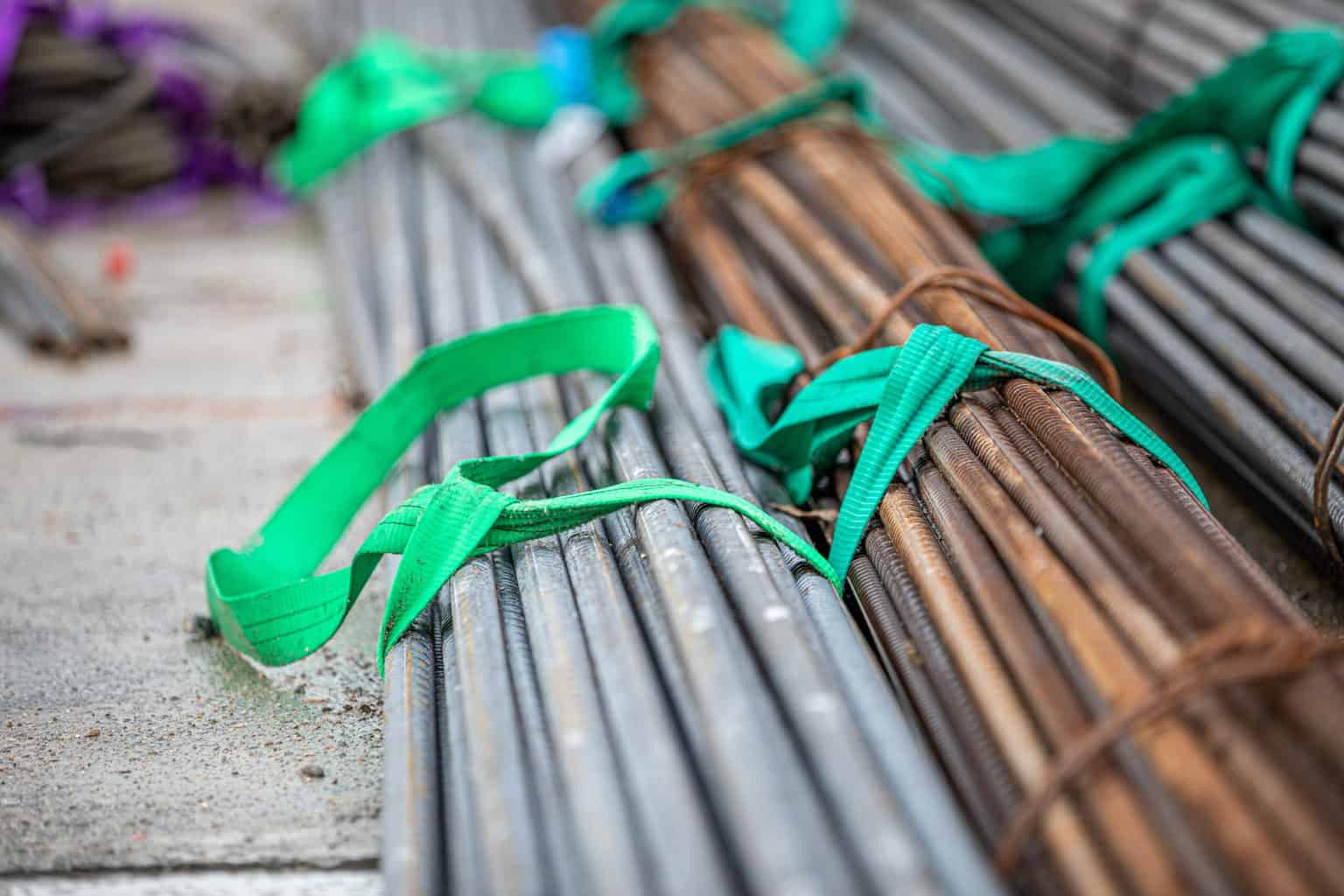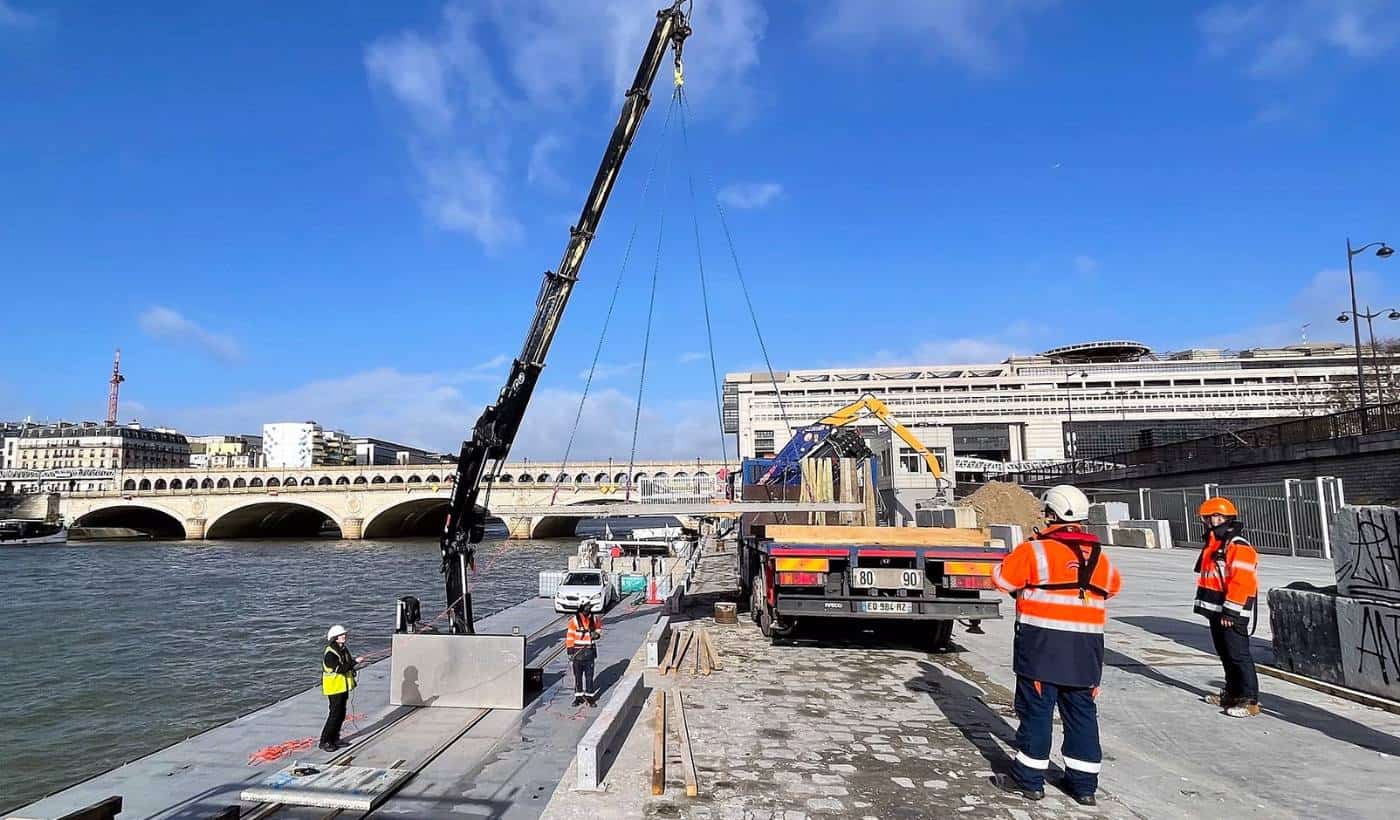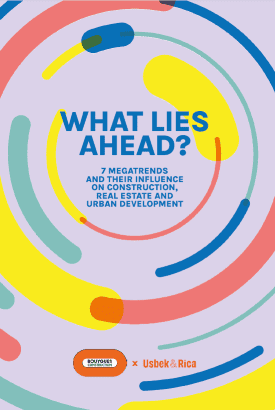
Is the general public ready for second hand materials?
4 minutes of reading
The refurbished market has been booming in recent years in every sector and – is reflecting changes in consumer habits. Increasingly, people are opting for everyday products and items which have already been used.

They no longer want mass produced products which are then – all too readily thrown away. Clothing, furniture, technology, etc. – anything which can be bought (or almost anything) can then be used by several people or families without being branded as ‘new’. This is not a new way of thinking, but it seems to be gaining momentum, driven by a favourable social, economic and ecological climate. However, can this concept of second hand go beyond the confines of everyday life and become established in sectors such as housing, where the personal investment is also more long-term? Joanna Férrière, the Circular Economy Manager at ELAN, a subsidiary of Bouygues Bâtiment France Europe specialising in providing advice for, studying and managing projects and works in real estate and sustainable construction, can begin to give some of the answers and shed some light on the situation.
Can the concept of second hand be applied to construction?
“This is a time of growing awareness about the importance of consuming natural resources less and better, increasing local consumption and reducing the impact humans have on the environment. This had – and still has – a direct impact on the growth of the refurbished market. However, this type of consumption also goes hand in hand with certain ideas about economy,” explains Joanna Férrière. Although more consumers increasingly want to be more responsible and eco-friendly, many of them are also looking for good deals! “There is a real expectation concerning price and second-hand items. As a result, if the same expectations which drive these purchases are to apply when it comes to goods which represent the purchase of a lifetime, some awareness-raising work needs to be done. In particular, it’s important to explain that, unlike everyday objects present on platforms for sale between individuals, reused materials in the construction industry– must have their performance– checked by a building control office. They must be covered by product liability insurance (the client’s insurance, as well as that of the builder and all the subcontractors working on a site) in the same way as new products. In practice, before materials are reused, they are refurbished so that each one demonstrates the qualities which it had when it was first used. ”At Bouygues Construction, all activities are already involved in the refurbished market
“We are well aware that our natural resources are limited. In order to be able to continue building, we need to move away from linear consumption and change our construction methods and materials,” continues the Circular Economy Manager at ELAN. The practice of take, use and throw away must stop. Bouygues Construction has been doing this for almost seven years now. This approach has expanded over the years – from isolated initiatives to large-scale construction partnerships. “Materials are now being reused on all Bâtiment, Travaux Publics and Énergies et Services construction sites. Future new construction habits are now being deployed, including selective deconstruction, which aims to dispose of, reuse, re-employ and recycle as many materials as possible, as well as purchasing re-used interior finishing materials (false floors, paint, partitions, carpeting, doors, etc.). Extensive development work is also currently being carried out to ensure that materials being used can be reused in the future. ” The dismantling and reusability of buildings is becoming the focus of R&D at Bouygues Construction.How can individuals be persuaded to accept reused materials?
“When it comes to second-hand flooring, there is still– a certain reluctance –on the part of end buyers. Future owners want something durable, solid and reliable when buying a house! They want maximum assurance about how long a home will remain in –good condition –when they will be paying for it over 20 or 25 years. At the moment, reuse in the context of a living space doesn’t seem to be sufficiently efficient, ‘clean’ or of enough added value to the general public. However, reuse allows access to materials which are difficult to access financially, such as solid oak flooring, a marble fireplace, etc. Reuse allows the opportunity to add some old-world charm to the new! The real challenge therefore for the building sector, and more broadly for all construction and development trades, is to make reuse attractive. This can be done through a refurbishment phase.” This step enables completed buildings to have the quality of new builds, but with the same or even lower environmental impact. “In addition to the performance of materials being checked, the general public needs to understand that each reused element in the construction has been through an upcycling process, rendering it indistinguishable from a new product. ”Sorting, reusing, recycling – a long but worthwhile process!
The reuse of materials is a long process which involves different professionals and requires several different stages. “In the first instance, we’re looking for sources of existing materials in finishing work, plumbing, sanitary facilities, cupboards or even soil,” explains Joanna Férrière. Bouygues Travaux Publics for its part, has been paying particular attention– for several decades –to land management, backfilling and recycling aggregates. The latter is reused to create concrete for the construction industry. If we have a deposit of soil, we check that it’s not polluted and adjust its PH before adapting it for its future use. We also create Technosols. These are soils reconstituted from urban and inert waste, – such as that from Travaux Publics. This is a very promising solution to stopping soil being repeatedly taken from natural environments. ”Did you know?
A Tunnel, the metro, a building, etc. all require excavation. In other words: the removal of soil. This soil, depending on its location, does not necessarily have sufficient agricultural value to sustain living organisms in a satisfactory manner. Adding plant or organic matter allows it to regain the mineral/humus balance necessary for new, greener uses. This is what Technosol is.Selective deconstruction – an approach which makes all the difference !
Bouygues Bâtiment France Europe is currently involved in the conversion of the former Blériot Aéronautique factories (former headquarters for Airbus) and a student residence with 270 dwellings – adjoining the SKEMA Business School in Suresnes, Hauts-de-Seine. 22,000 m² is under redevelopment in total. 85% of the materials have been reused or recycled during the clearance phase thanks to the strong motivation of the construction team (supported by ELAN teams) and its principle of selective deconstruction. After some remedial work, the following materials will be able to enjoy a second life:- 850 m² of raised access flooring
- 900 m² of concrete cladding panels
- 50 m² of carpeting
- 75 linear metres of glass partitions
- 40 linear metres of high partitions
- 1 000 m² of false ceilings
- 5 fire doors
- 110 interior blinds
- 3 cooling units
- 1 generator
- A dozen or so electrical cabinets
- 2 overhead cranes
- 1 wooden staircase
Did you know?The ‘products, materials and waste’ assessment will soon be mandatory!
From 1 January 2022, all major renovation and demolition activities will be subject to an assessment of how the products, equipment, materials and waste from the work is going to be managed. This requirement has been laid down by two decrees published in the Journal Officiel on 27 June 2021 within the framework of combating waste and of the circular economy. Does this demonstrate a new shift towards reuse? Definitely! The assessment should provide the necessary information on building products, materials and waste with a view to their reuse or, failing that, their recovery. It should therefore indicate the recommended recycling channels and specify any additional analyses to be carried out to ensure the reusability of these products and materials. This requirement should boost – or even make – reuse in the construction sector more widespread, as well as see the development of new facilities capable of both identifying and processing second-hand items and putting sellers and buyers in touch.Most read
More reading
Read also

Article
20 minutes of reading

Energy
in partnership with


‘Paris at 50°C’: a fact-finding mission to prepare Paris for future heatwaves
Article
2 minutes of reading

What if your sites were supplied via rivers instead of roads?
Article
3 minutes of reading



